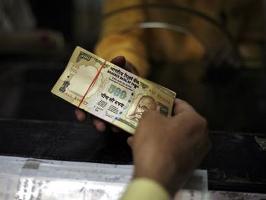The finance ministry has ignored some of the more substantive recommendations of the P J Nayak committee report
 P J Nayak, former chairman and managing director of Axis Bank, is one of the prominent speakers at the two-day Gyan Sangam, a finance ministry-organised retreat in Pune to prepare a blueprint for the next wave of banking reforms.
P J Nayak, former chairman and managing director of Axis Bank, is one of the prominent speakers at the two-day Gyan Sangam, a finance ministry-organised retreat in Pune to prepare a blueprint for the next wave of banking reforms.
Nayak is scheduled to speak on Friday (today) on his pet subject: governance of banks.
The timing is perfect as the government has just accepted the Nayak committee’s recommendation of splitting the post of chairman and managing director in public sector banks.
More recently, the central bank also backed the move, saying that the CMDs of public sector banks enjoy absolute power and often dominate the boards during their tenure, and that this functional separation will help improve the functioning of the top management of banks.
The logic is, of course, open to debate as many bankers say the move will have a serious impact on the chain of command of nationalised banks and that it would only enable the government to dish out favours to a few of their own men.
This is because the controlling shareholder is the government, which will appoint both chairman as well as the chief executive officer, resulting in two power centres trying to please the same master.
If that’s the case, it’s better to have an executive chairman, like in the case of State Bank of India.
Nevertheless, Nayak should be happy that the government has listened to his and the Reserve Bank of India’s suggestion on splitting the post.
Or, will he?
The short answer to that question should be in the negative.
For, the government has ignored the more substantive part of his report -- that is, splitting the CMD post should be done only at the last phase of a three-stage process to empower bank boards.
“If reform is piecemeal and non-substantive, it is unlikely that there will be material improvement in the governance of (public sector) banks,” the committee report had said.
But that is precisely what the government has done -- it has leapfrogged to the last phase first.
According to the report, the government should first entrust the selection of non-official directors to a bank boards bureau, a body of former senior bankers; second, restrict the tenure of directors and bring in rules on a cooling-off period for reappointments; and third, RBI directors should step down from the boards of banks.
It’s only after this that the CMD post should be split.
The report had also suggested that the government distance itself from several bank governance functions and formation of a bank investment company that would nominate the non-executive chairman, while the MD and the CEO would be selected by respective bank boards.
Nayak should know the benefits of such a system as he headed Axis Bank.
When the bank commenced business, it was owned by the Unit Trust of India and a clutch of public sector insurance companies.
Yet it was awarded a private-sector bank licence. Even after the bank was listed in 1998, it continued with a majority public sector shareholding, right up to February 2003, when the UTI shareholding was transferred to the Special Undertaking of the Unit Trust of India.
Since then, the government-as-investor stance has characterised the control of the bank, with the SUUTI acting as a special purpose vehicle holding the investment on behalf of the government.
The CEO is appointed by the bank’s board, and because the bank was licensed in the private sector, it sets its own employee compensation and ensures its own vigilance enforcement.
The SUUTI appoints the non-executive chairman and up to two directors on the board, and there is no direct intervention by the finance ministry.
This model can operationally distance the government from the banks, thereby discouraging direct intervention and suasion, while helping align the government’s role as that of the principal shareholder in banks, focused on financial returns.
At the Gyan Sangam, Nayak will have a great opportunity to drive his point home once again.
But chances are that he may himself face a rather uncomfortable counter-question from the audience.
Nayak had bitterly opposed splitting of the CMD post that he held at Axis Bank.
The RBI had proposed a non-executive chairman while retaining Nayak as the MD of the bank.
Since he has maintained a studied silence on that issue so far, it would be interesting to know his answer.












 © 2025
© 2025